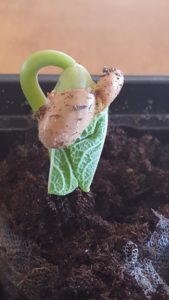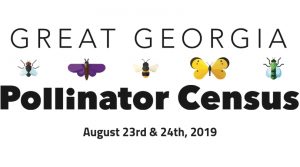School gardens routinely grow food crops, create pollinator habitat, and even replicate historic gardens. They are an integral part of school curriculum used to teach botany, math, nutrition, history, literature and even geography. However, the one area lacking in the hundreds of school gardens that I have visited is seed saving. Seed saving can be an important horticultural part of the garden as well as an additional avenue for tying the garden to school curriculum. With a bit of botany background, proper seed saving is not difficult and will be a fun part of your garden!

Until modern times seed collecting was the only way a gardener had seed for the next year. Seed was shared with neighbors and passed down from generation to generation (heirloom seeds). Seeds were taken across oceans and over the American prairie and they are an important part of our agricultural history. Your students may have heirloom seeds stories to share. In my area of Southern Appalachia seed saving is part of many family heritages.
Seeds 101

Hybrid plants are not appropriate for seed saving. They are bred to amplify a certain trait such as disease resistance or larger fruit and are produced by cross-breeding two plants with different genetics. Tomatoes are a great example. Most of the tomatoes grown in backyards are hybrid tomatoes with names like Better Boy and Early Girl. Although these varieties produce delicious tomatoes, they are not appropriate for seed saving.
Hybrid plants produce seeds that are genetically unreliable or not true-to-type. These seeds are undesirable for seed saving.
Open-pollinated plants are the type of plants we want for seed collecting. They are pollinated naturally and will produce seeds that are true-to-type if they are isolated from other varieties. So, it is important for the school gardener to choose only one variety of the seed producing plant. For example, do not plant Calypso beans in the same area as Hidatsa beans. They could possibly cross-pollinate resulting in seeds not true-to-type. A garden of only Calypso beans will produce true Calypso bean seed! Larger gardens follow the recommended isolation distance for seed saving for most beans that is 10-20 feet.
With the smaller space of a school garden, it is best to choose one variety of the seed producing plant type for seed saving.
SEED SAVING AND YOUR SCHOOL CURRICULUM
Lesson ideas are numerous:
- Pollination – what exactly is pollination and fertilization
- Pollinators – how is pollen spread
- History – heirloom seeds
- Geography – how did crops spread around the world
- Math – how many seeds produced per plant/fruit/bean pod
- Genetics – Hybrid plants and gene traits
- Cultural Studies – choose plants with cultural significance such as Chinese long beans or tomatillos
- Literature – research how seeds came from Europe and Africa to become part of our agricultural system
Seed Savers has a website full of seed collecting information. Your local land grant Cooperative Extension office can assist you in choosing varieties of plants that will work well for seed saving and will grow well in your area. Over the next several weeks we will explore seed collecting in more detail so grab your seed catalogs and start planning your spring seed collecting garden.

